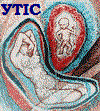
|
|
|
|
|
Elevated Neural Tube Defects (NTD) Rates in Ukraine - Highest in Polissia
1 Ukraine OMNI-Net and University of South Alabama
2 Rivne OMNI-Net and Medical Genetics Center at the Regional Diagnostic Center
Background: Population birth defects (BD) surveillance by the OMNI-Net started in 2000 and by 2002 data from Rivne and Volyn oblasts (provinces) of North West Ukraine showed that rates of NTD were sharply elevated (21 per 10000 live births, N. Yuskiv et al., Birth Defects Res. A Clin. Mol. Teratol, 2005). Rivne data suggested that prevalence rates were highest in the Rivne-Polissia, a region impacted by chronic ionizing radiation from the Chornobyl disaster. Polissia has boggy soils with low humus and high peat contents resulting in high soil-to-milk transfer coefficients of Cs-137. The Polissia population is known for self-sufficiency, reliance on locally grown food, consumption of game, wild mushrooms and berries. The likelihood is high that nutrition in Polissia may be deficient in micronutrients and folates, particularly during winters; that nutrients and water are contaminated by Cs-137, including milk and potatoes which are the main dietary staples. Another Cs-137 significant source is reported to be aspiration of contaminated dust and smoke from burning biomass. (See companion abstract by B. Ievtushok and by L. Yevtushok).
Method: Analysis of NTD 2000-2006 data from Rivne Polissia and non-Polissia regions and official background demographic, nutrition and radiodosimetry data.
Results: NTD prevalence rate in Rivne Polissia and non Polissia is 27.0 and 19.6 (21.6 and 16.6 for isolated NTD, contrasts that do not reach statistical significance). However more detailed analysis by raions (counties) is warranted and is ongoing. Every Rivne - Polissia raion is officially designated as impacted by ionizing radiation; the rest are designated as "clean"; there are nearly 200 inhabited points; the largest yearly birthrate is in the city of Rivne (nearly 3000); official Cs-137 monitoring is conducted solely in the Polissia region; available reports show sharp variations by place and time; and in some villages Cs-137 levels in milk have increased with time. Another observation concerns seven instances of conjoined twins of which six were born in the Rivne oblast (one twin had spina bifida) and the other in Kherson oblast.
Conclusions: Broadening retrospective and prospective investigations of the Rivne Polissia population are warranted.
See:






